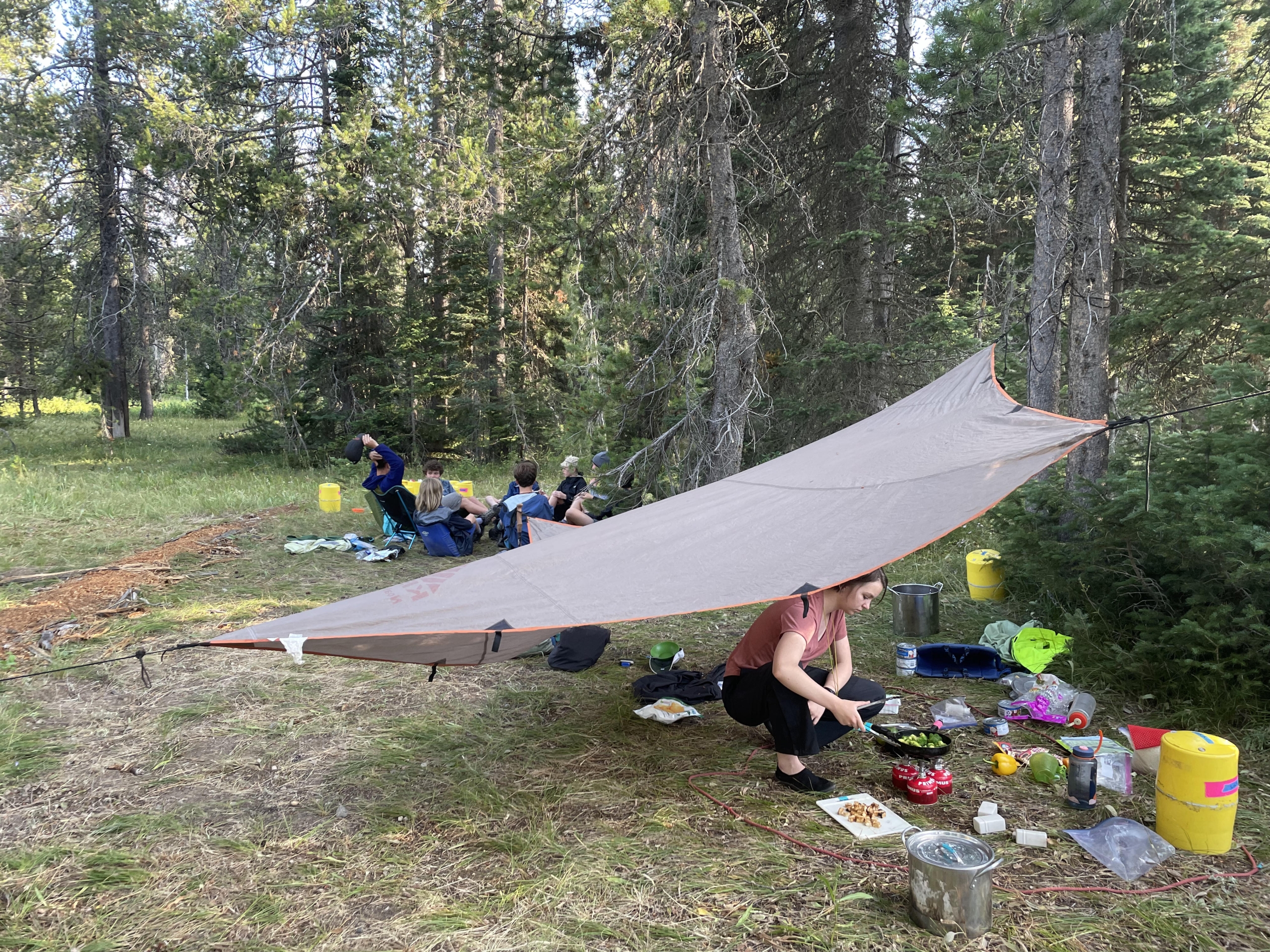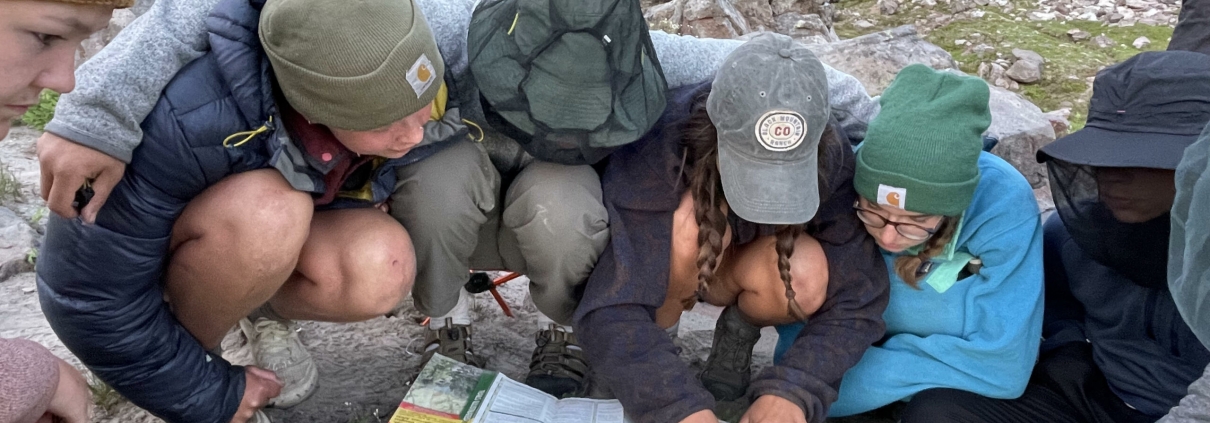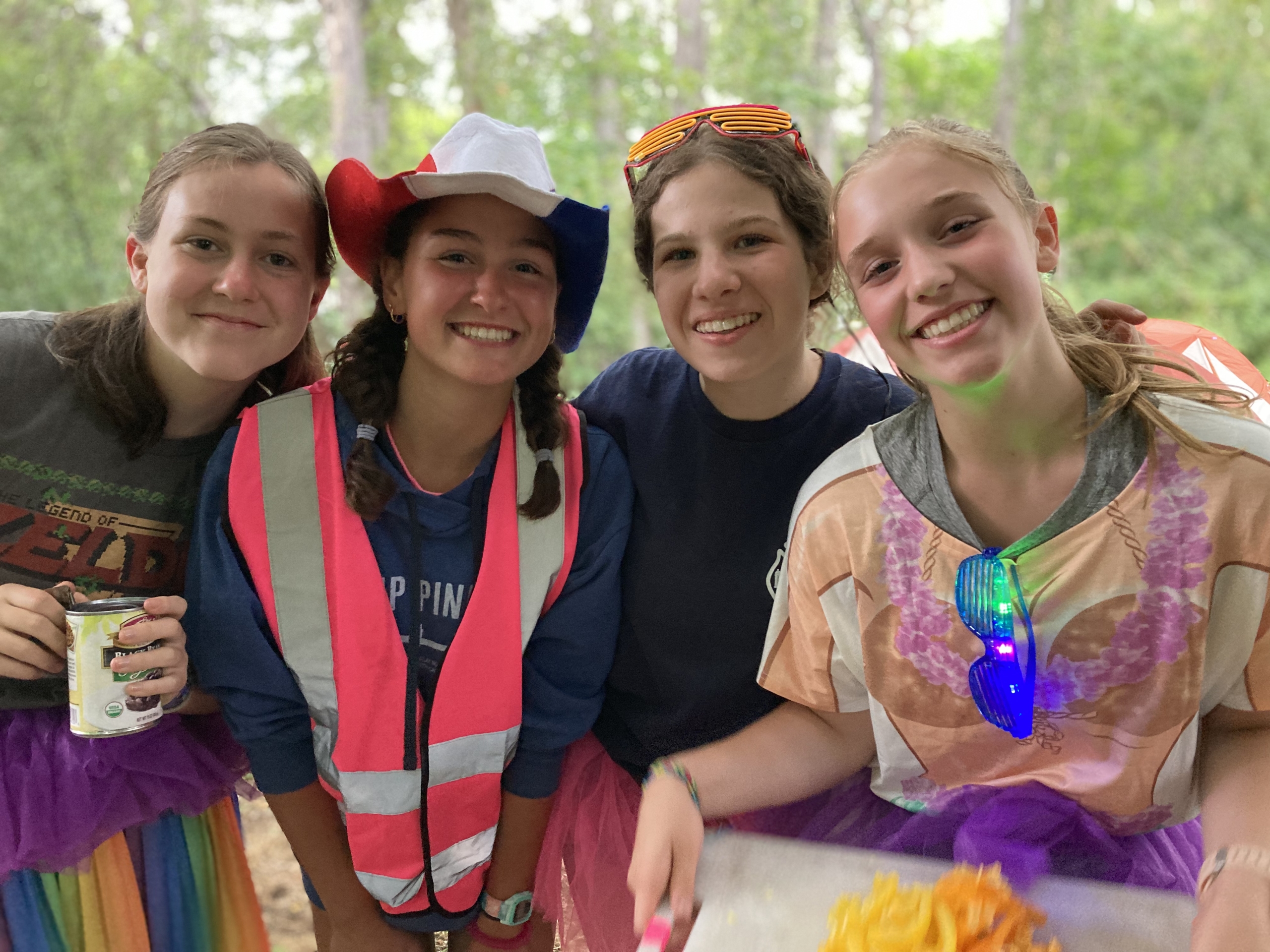How to Plan a Multi-Day Outdoor Adventure
The Adventure Treks community at large enjoys spending time outside and cherishes overnight adventures in nature. If you’ve been on an Adventure Treks trip, you know that we spend many months planning our expeditions—a lot goes into organizing each of our trip’s itineraries! If your AT trip has sparked an interest in planning your own multi-day backpacking adventures, we’ve outlined four main steps below to help make the process easier for you.
(Because Adventure Treks is a business and plans trips for up to 30 people, we follow specific rules, hold commercial permits, and follow many more guidelines that are different from personal trips. We’ll assume your first foray into expedition planning will not involve 23 of your closest friends…)
#1: Logistics
Where do you want to go?
We recommending narrowing your options to a location you’re familiar with, or one that’s a little closer to home. This will take some of the stress off your shoulders; once you gain some experience planning backpacking trips, you can dive into new wilderness areas.
Online forums are a great place to get tips on different hiking trails and, more important, check for recent water and trail conditions!
Do you need a permit?
Some wilderness places require permits for personal trips, while some areas do not. And some permits are easy to obtain, while others are doled out via lottery systems. Places in high demand (like Half Dome in Yosemite National Park, the Narrows in Zion, and Grand Teton and Yellowstone national parks), utilize strict permitting systems to prevent overuse and overcrowding of lands and trails.
Thoroughly research the area you’ll be recreating and comb through its official governing website (e.g., National Forest Service or National Park Service) to find information about permitting, use, and any other restrictions or schedules. You’ll also find information on what’s allowed in that area; for example, whether you can bring your dog, if there are bear boxes to store food, etc.). In western states, be sure to check fire restrictions and specific Leave No Trace ethics (in warmer months, places like Colorado and California may not allow campfires, and many desert regions require all trash and human waste to be packed out… this means no digging catholes! More on LNT below).
Public lands in the United States have their own rules, as they also have unique and individual missions (you can read about some of those differences here). Take as deep a dive as you’d like about the land you’ll be using—but just make sure you know the rules about overnight wilderness trips before you arrive at the trailhead.
Leave No Trace principles
The seven principles of Leave No Trace provide a framework for how to recreate sustainably in the outdoors and leave minimal impact on the land. It also covers a lot of your bases in the overall planning process.
- Plan ahead and prepare: As we’ve already covered, decide where you are going ahead of time and research the area. Look at the weather forecast, elevation, and terrain to inform your packing list. Purchase a map or download an app to make sure you know your route, your mileage each day, and what hiking pace to keep to stay on schedule.
- Travel and camp on durable surfaces: Stay on the trails to avoid scarring and eroding the landscape around you. Select an appropriate campsite for both you and the environment. Camp on flat ground and pitch your tent on soil, gravel, or sand instead of fragile vegetation. Avoid camping under dead trees and set up camp 200 feet away from rivers and streams.
- Dispose of waste properly: Depending on the area, you may be able to dig a cathole to dispose of solid human waste, or you may be required to carry it out (not uncommon in fragile ecosystems in the American west). If catholes aren’t allowed, add “WAG bags” to your packing list in order to carry out your poop (sometimes these are available at the trailhead, but we wouldn’t count on it). Put your poop kit together ahead of time and don’t leave any trash behind.
- Leave what you find: Leave wilderness areas as you’ve found them (or better than you found them). You don’t want the people hiking in after you to know exactly what you ate for breakfast because of the food droppings left all over their campsite, or to know exactly where you used the bathroom, or to have to clean up trash that you left. Do not carve your initials into trees, do not remove artifacts or any other items from the forest, and don’t pick the beautiful wildflowers you see.
- Minimize campfire impacts: As you know, it’s crucial to be familiar with fire restrictions ahead of time. Some campsites have designated fire rings , while others do not allow fires of any kind, and others yet will allow fires anywhere in the forest.
- Respect wildlife: Familiarize yourself with local wildlife and how to minimize potential encounters. If there are black bears in the area, do you need to bring a bear can, or will there be a bear box? Are there rowdy raccoons that may try to steal your food? Are there venomous snakes or other small critters to avoid? Perhaps most important, if you do encounter wildlife, keep your distance!
- Be considerate of other visitors: Be friendly with fellow hikers as you pass them on the trail. Respect that people have chosen to explore the outdoors for many reasons, and they may not want to hear your music blaring as you walk along the trail or late at night. If you’re bringing a pet, know the leash laws and do not let your animal run after wildlife.
#2: Food!!!
If you’ve been on an Adventure Treks trip, you’ll know that we LOVE food! You don’t need to skimp on meals just because you’re in the backcountry. Take a look at some of our backcountry meals to spark inspiration for your menu. A few handy tips:
- Bring LOTS of snacks.
- If you’ll be in a dry environment with little water, think about how “water intensive” your meals are (i.e., don’t plan on pasta, rice, and oatmeal for every meal… instead, think about pita pizzas, wraps, or sandwiches).
- Pack food that covers all of your nutrient bases to give you energy for long days and hard hikes.
- AND DON’T FORGET DESSERT! Hot cocoa, brownie mix, chocolate, Skittles… Bring along a treat you can pull out once you reach your campsite or hot cocoa when you get up to watch the sunrise.
Read more about backcountry cooking here.
#3: Gear
Food
Don’t just bring food: Bring the tools you’ll need to cook and eat it! Stove, lighter, gas (extra gas is always a good idea), mess kit, pot, pan, spatula, knife or multitool, spices, and cooking oil. You can use biodegradable soap and a sponge to clean dishes (a small rag can also work for a short trip).

You may prefer bring a tent, tarp, or hammock—check the weather to see which would be best. Bring an extra tarp to create a covered area to hang out and cook if there is any adverse weather in the forecast.
Don’t forget your tent, sleeping pad, and sleeping bag. Instead of a cumbersome pillow, toss your clothes into your stuff sack and use that instead. Of course, we’d be remiss to leave out the ever-present camping chair.
Water
A water purification system is crucial. (You can become extremely ill from drinking untreated water.) We specifically use Aquamira, but there are lots of water purification systems out there. Test your system out beforehand to make sure it works.
Don’t assume you’ll always come across a fresh water supply—rather, use your map to mark rivers, springs, lakes, or other bodies of water to plan how much to bring and where to resupply.
First aid kit
Take the basics: Band-Aids, alcohol wipes, gauze, Ace wraps, blister treatment (like moleskin), ibuprofen and anti-histamine, medical tape… And don’t forget group-specific gear, like Epi-Pens or inhalers. Dive deeper into a detailed first aid kit here.
Navigation
Don’t forget a physical map and compass or an app you can utilize without service. If you’ll be using electronics often, bring a solar or external charger as well.
Clothing
Once you’ve checked the weather, you’ll have a better idea of what to pack for your trip. Check out the following blogs for more information on outdoor clothing and gear: fleece, insulated jackets, trekking poles, headlamp, rain gear, and hiking boots.
Backpacking does not need to be expensive! Most, if not all, of these items might be found in your closet or at a nearby thrift shop. As long as your rain gear is waterproof, your tent doesn’t leak, and your sleeping bag and pad keep you warm, you’re pretty much set!
#4: Fun and flair!
What is a backpack without some flair?! It’s always fun to spice up your hike with a mascot, a silly hat, and a fun game. Here are some other entertainment options:
- Astrology books or apps
- Games (One Night Ultimate Werewolf is one of our favorites; you’ll never go back… or trust your friends again)
- Your best British accent
- Your spookiest stories
- A book of stories to read around the campfire
- A journal, sketchbook, or watercolors
If you have any questions or want to talk through how to plan a trip, use us as a resource! Your former instructors and the AT office would be happy to answer any questions and help wherever we can. We’d also LOVE to see photos of your trip and hear about it!



